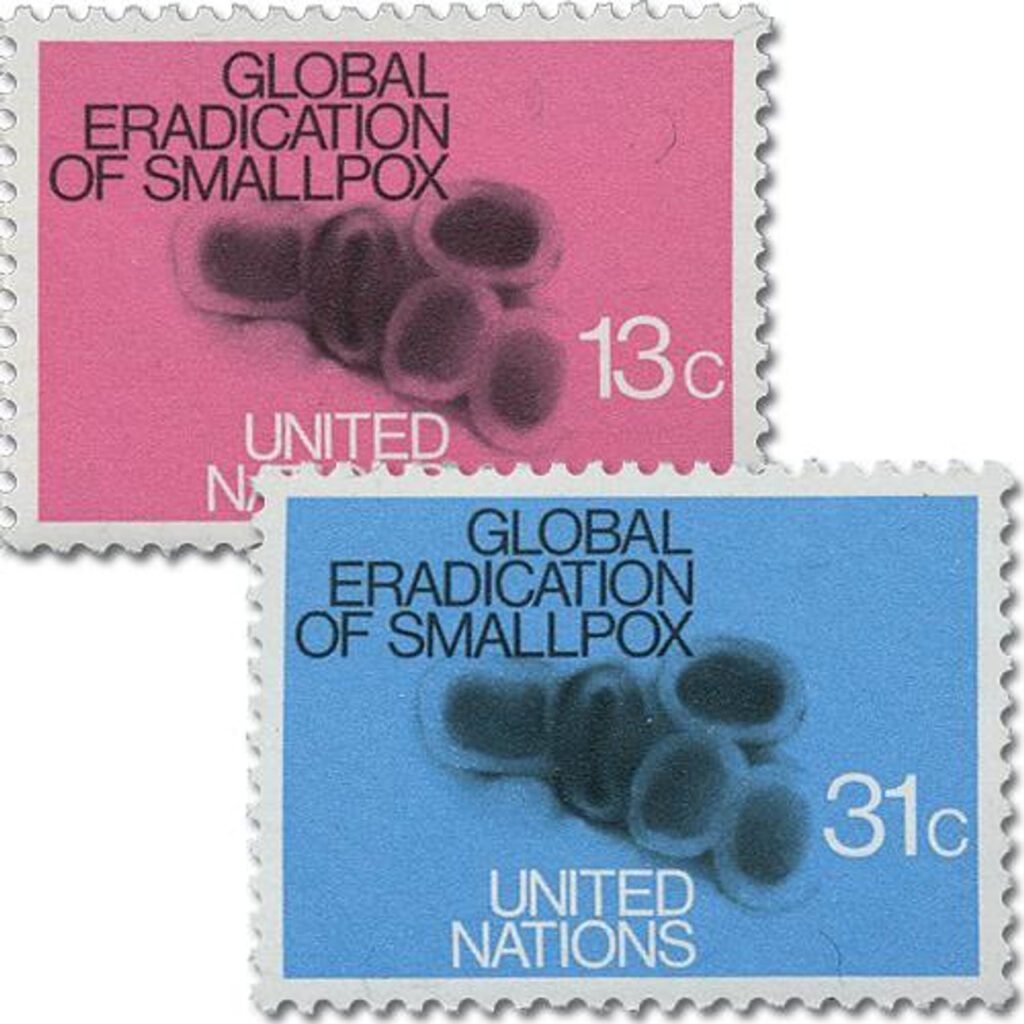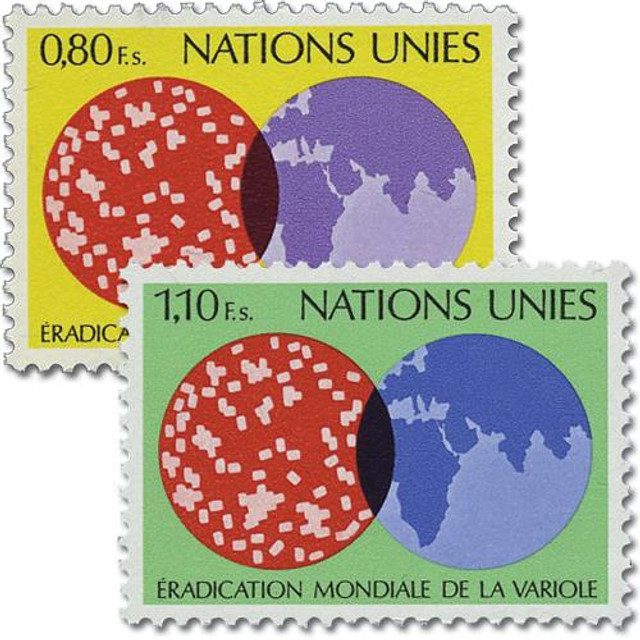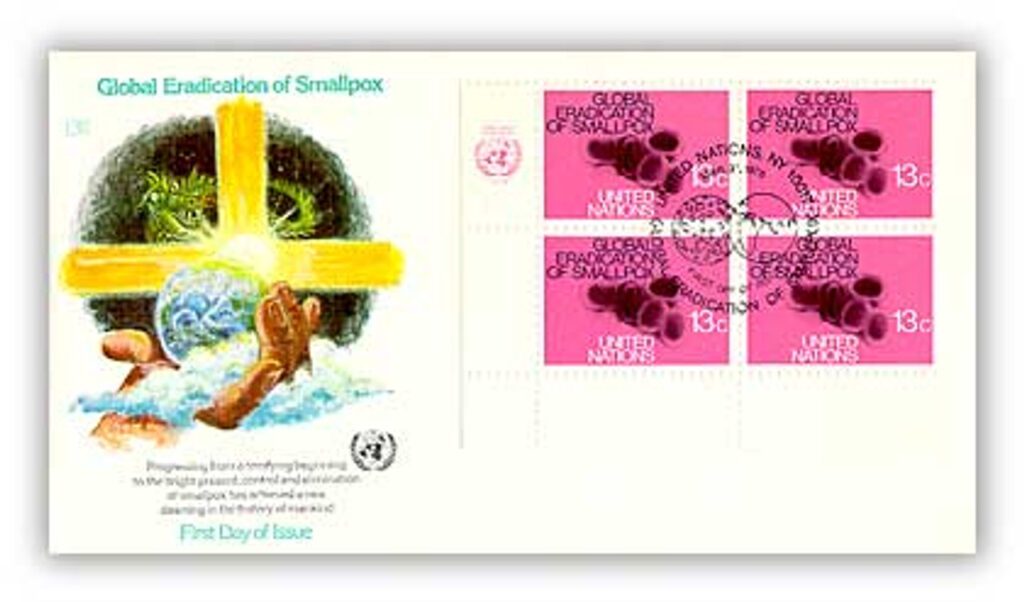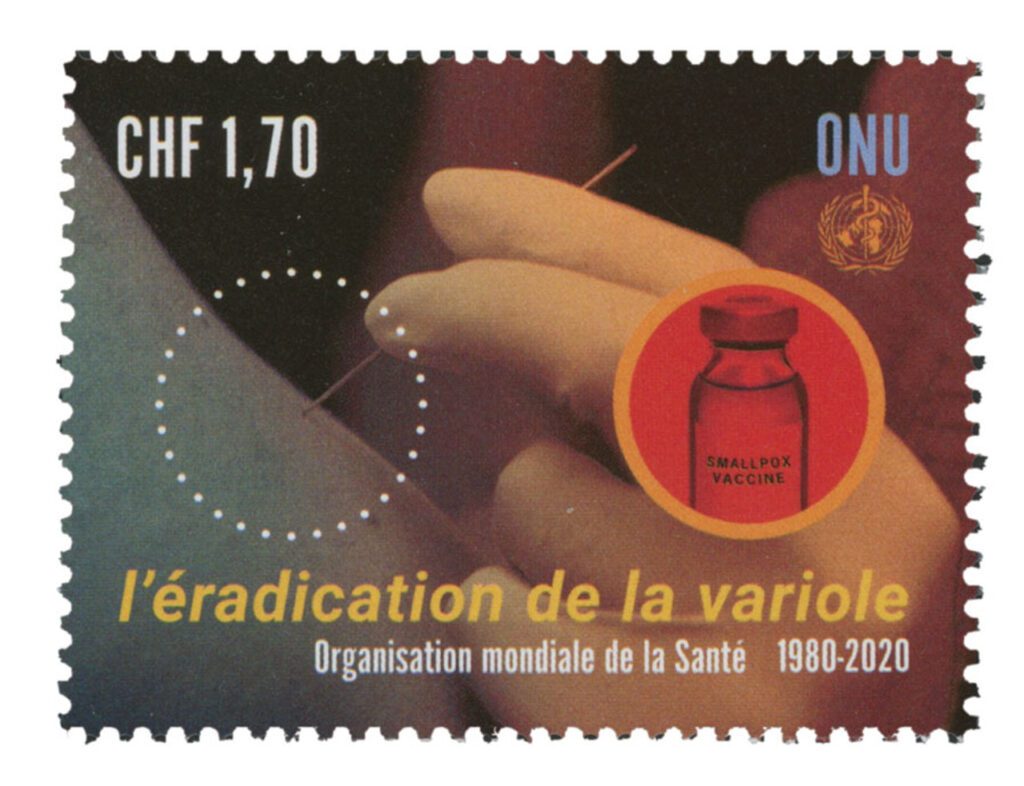On December 9, 1979 the Global Commission for the Certification of Smallpox Eradication completed their task, confirming the disease would no longer be spread naturally.
Historians believe smallpox (or the variola virus) first appeared around 10,000 BC. For thousands of years it spread around the globe, killing an estimated 20 to 60 percent of those that were infected, and over 80 percent of infected children.

The first major breakthrough came in 1796, when English doctor Edward Jenner created the world’s first vaccine. By injecting his patients with the similar cowpox virus, they became immune to the more severe smallpox. For his pioneering work, Jenner is considered “the father of immunology” and his work is often credited with saving “more lives than the work of any other human.”
Jenner’s vaccine was then distributed in a worldwide effort to fight smallpox. Several nations instituted mass vaccination programs, and some even made them mandatory. Through these efforts, the variola major strain of smallpox was almost entirely eliminated in the United States by 1897. Northern Europe followed in 1900, and by 1914 the disease was gone from most industrialized nations. However, because the variola minor strain of smallpox was much less deadly (killing only 0.3-1% of those infected), vaccinations became less frequent in the US. As the number of outbreaks rose, mandates were instituted at the state and local levels. The Supreme Court upheld a mandate in Cambridge, MA, in 1905, and one for a Texas school district in 1922.

While major progress had been made, there were still millions of people dying from smallpox around the world. In 1950, the Pan American Health Organization launched the first hemisphere-wide effort to end smallpox, succeeding in all but four American countries. Then, in 1958, Professor Viktor Zhdanov addressed the World Health Assembly (WHA), challenging them to launch a world-wide smallpox eradication program. The WHA passed the resolution the following year, but progress was slow, as some two million people were still dying from the disease every year.
The World Health Organization (WHO) formed the Smallpox Eradication Unit in 1966 and dedicated $2.4 million annually toward the cause. This group also instituted a new surveillance method and ring vaccination, in which they monitored entire communities and vaccinated every one who came in contact with an infected individual.
These efforts produced great results. By 1975, smallpox was only found in one part of the world – the Horn of Africa. The Smallpox Eradication Unit intensified their efforts there in the final push against this disease. The last person to contract smallpox naturally was Ali Maow Maalin, a hospital cook in Somalia. He caught the disease in October 1977 while helping to transport infected children. He was first misdiagnosed as having chickenpox and sent home. He suspected he had smallpox, but feared going into an isolation camp. A friend eventually reported his condition to local officials and he was taken for treatment and isolation. During the two weeks between his contraction and diagnosis, they estimated he’d come in contact with 91 people. The eradication team took extensive measures to vaccinate anyone going into or out of his town, and went door-to-door ensuring everyone was vaccinated. By the end of that year, they confirmed no one else had caught the virus.
The WHO continued to monitor the situation for another two years. As no more cases were discovered, the Global Commission for the Certification of Smallpox Eradication announced on December 9, 1979, that “smallpox had been eradicated from the world.” The following May, the WHO endorsed their statement, issuing their own resolution declaring, “that the world and its peoples have won freedom from smallpox.”
| FREE printable This Day in History album pages Download a PDF of today’s article. Get a binder or other supplies to create your This Day in History album. |
Discover what else happened on This Day in History.





This was a very relevant issue to cover at this time, when so many people are questioning the governments right to mandate vaccinations. Thanks.